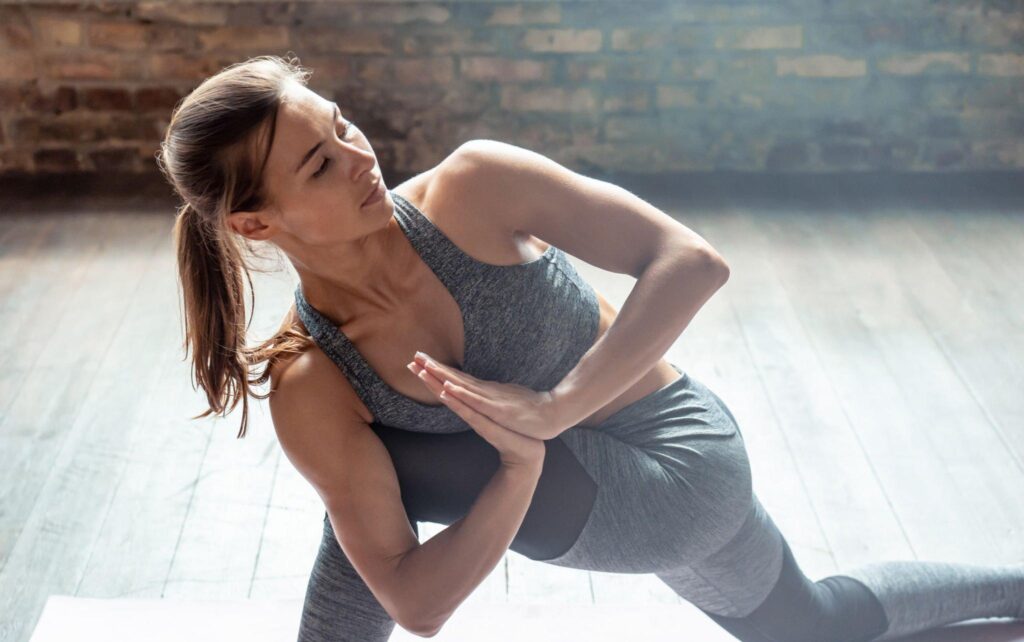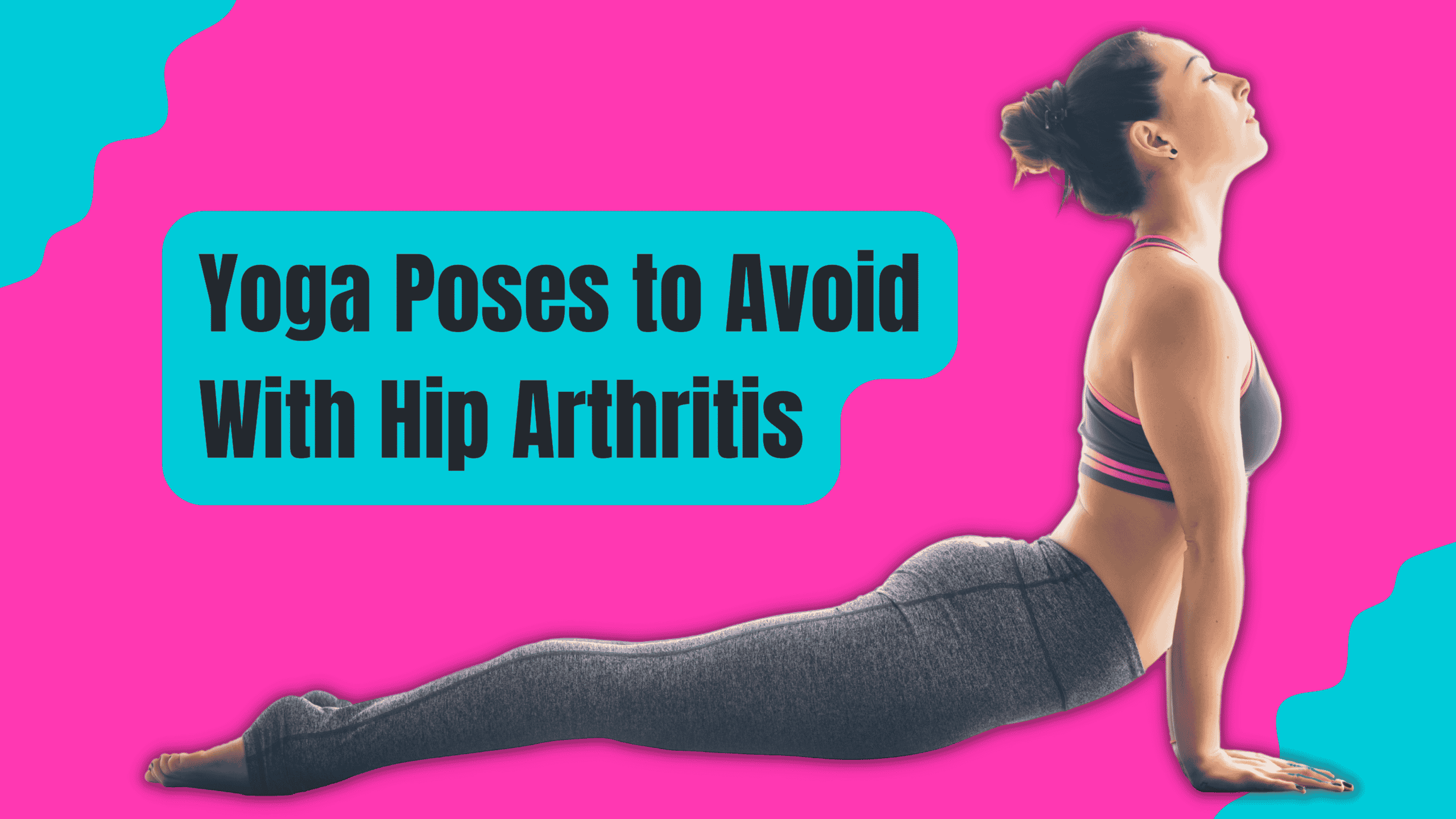There are many variations in the ancient practice of yoga, which has been around for at least five thousand years. The Western world, in particular, has taken to this form of exercise in recent years due to its perceived stress-reducing and muscle-toning benefits. Practicing yoga can be a great way to strengthen your body and calm your mind simultaneously.
Since yoga focuses on stretching and strengthening, you may believe it will help your hips if you suffer from pain in that area. Yoga can have many health benefits, but it is essential to practice it safely. To do otherwise would put you at risk of exacerbating the pain in your hip rather than relieving it.
I have hip pain; is it possible to do yoga?
In most cases, you can still practice many yoga postures even if you’re experiencing hip pain. Some yoga poses avoid hip arthritis, and others should be adjusted to place less emphasis on the hips.
How can I eliminate hip pain in yoga?
In yoga, it is essential to tune in to and respond to your physical sensations. Even if you experience pain or stiffness in your muscles or joints, it is fine to stretch them out. But, if you’re in pain, you should probably stop what you’re doing to save yourself some suffering. No amount of agony will be worth it if you try to drive the motion in a direction it does not want to go.
Recognize your physical and mental capabilities and the extent of your past endeavors. You don’t have to be able to do a yoga position just because it’s recommended. You can always ask your yoga instructor for alternative poses that won’t put you in danger. Make sure you know which yoga poses to avoid with hip arthritis.
Yoga is a great way to strengthen your muscles and relax your mind. It requires careful practice to reap the full benefits. Your hip pain may exacerbate if you try to perform physical activities outside your comfort zone. It could otherwise result in further injury.
Yoga Poses to Avoid With Hip Arthritis
There are some yoga poses to avoid hip arthritis, and these are those that put pressure on the hips. You can even modify them if you suffer from recent hip pain or arthritis or if your hips are weak, fragile, or cause chronic pain. These positions strain the hip flexors, which can worsen an existing injury.
Warrior I and Warrior II
Due to the inevitable extra strain placed on the hip joint by balancing the body’s weight on one leg in Warrior I and Warrior II, these yoga positions should be avoided if you suffer from hip pain. Soft tissue injuries, like hip flexor strains, can occur in the front of the joint. Hip dislocation can occur at the hip’s posterior point when doing these poses.

If you can alter Warrior I and Warrior II to the point where you can conduct them without discomfort, you may want to try them as a form of yoga for hip pain. This is because they improve the quadriceps, hamstrings, and glutes, all of which help to stabilize the hips. Hip pain can be alleviated by taking a shallower lunge and holding the position for a shorter time when practicing these yoga postures.
by pointing the toes of the rear foot more in the front direction. The hip extension is easy to minimize by bending the back knee slightly and lifting the back heel off the ground.
Tucking the knees into the chest
It’s essential to avoid this position if you’re experiencing hip pain, despite the many health benefits it provides. Despite how comfortable it is to keep your knee close to your chest, you will experience excruciating pain in your hip if you release the hold and allow your leg to straighten.

Pigeon Pose
There’s no way around the discomfort caused by the high demand placed on the hips by this pose. The 90-degree Pigeon Pose is a milder and more approachable version of the original pose.

Tree Pose
Due to the severe strain placed on the hip joint from bearing one’s weight in Tree Pose, this position is not recommended for people suffering from hip pain.
Flaring the other thigh to the side also forces the opposite hip to its extreme lateral flexion/external rotation position. Primarily if tension exists in the hip joint, this can cause the non-weight bearing hip to agglomerate.

Yoga poses that involve squatting down can be helpful for hip pain if they activate the gluteus medius muscle. That is responsible for hip abduction and the proper alignment of the knees and hips.
Suppose you suffer from hip pain while performing this yoga move. In that case, you may consider sitting your pelvis back somewhat about your ankle joint and maintaining your non-weight supporting leg positioned outwards without extending your hip to the side.
Reclining bound angle pose
This pose is achievable by lying on one’s back and bringing one’s feet toward oneself while simultaneously rotating one’s hips outward. If you have hip arthritis, shifting your hips while in this position can be excruciating. Hip osteoarthritis sufferers should avoid this pose, as it requires full external rotation of the hips.

Revolved Lunge Pose
Holding a lunge stance with the chest tilted forward can be a strenuous yoga practice for hip discomfort since it effectively puts the front hip into full flexion. In cases of anterior femoroacetabular impingement, this can cause excruciating pain.

Likewise, hip internal motions and adduction are augmented by the torso rotation. But, if you suffer from hip pain, you can adjust this yoga position by putting a block underneath the hand that is on the side opposite the front leg. The block provides support, limits angular motion, and lessens joint movement of the hip. To add, you can twist your torso without bending at the waist.
Conclusion
Yoga for hip pain and injuries varies significantly from person to person, so you’ll need to try different things to see what helps and doesn’t. If you’re experiencing pain during a yoga pose, immediately release it and see a doctor or physical therapist. Now you know which yoga poses to avoid hip arthritis.
